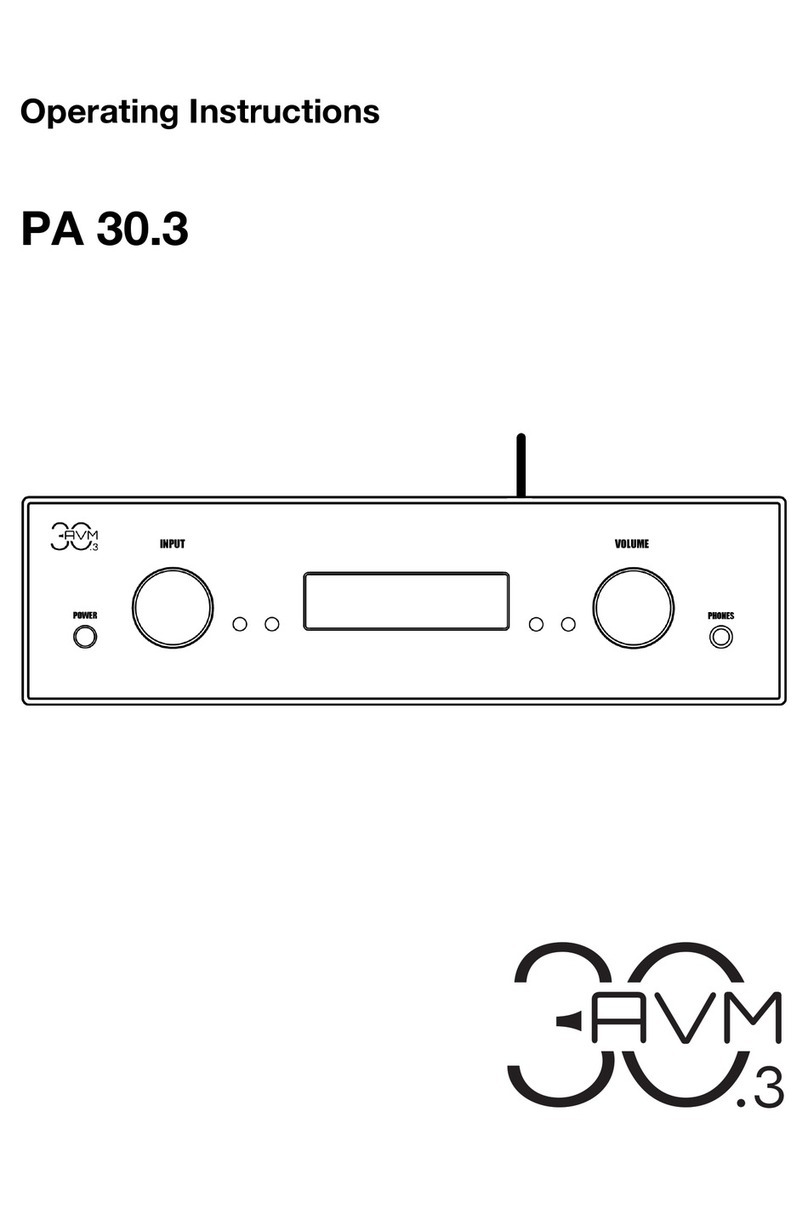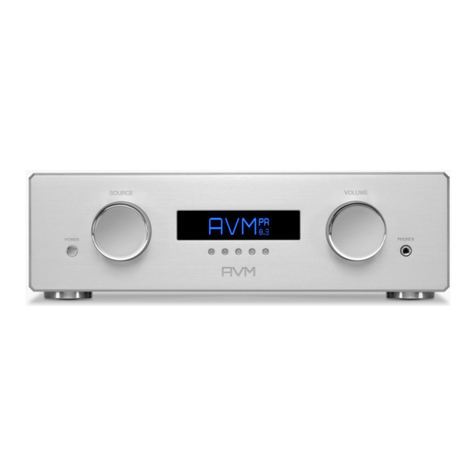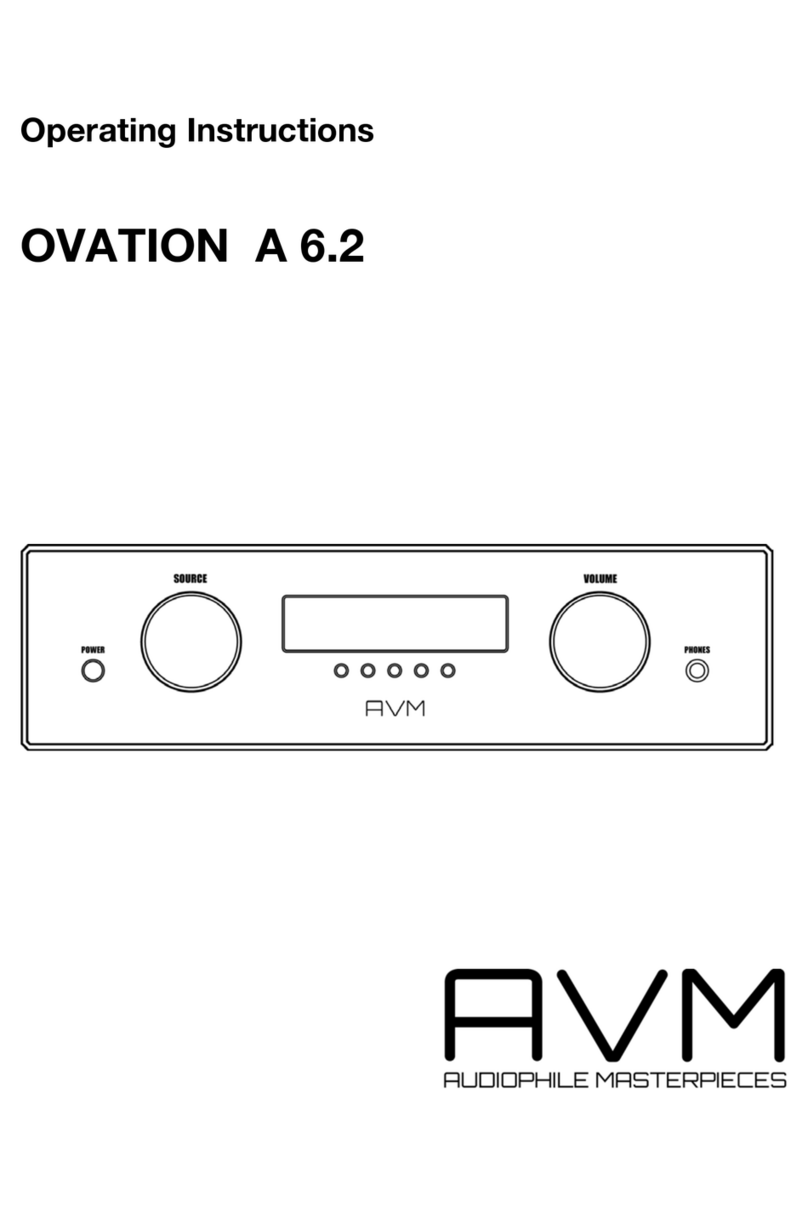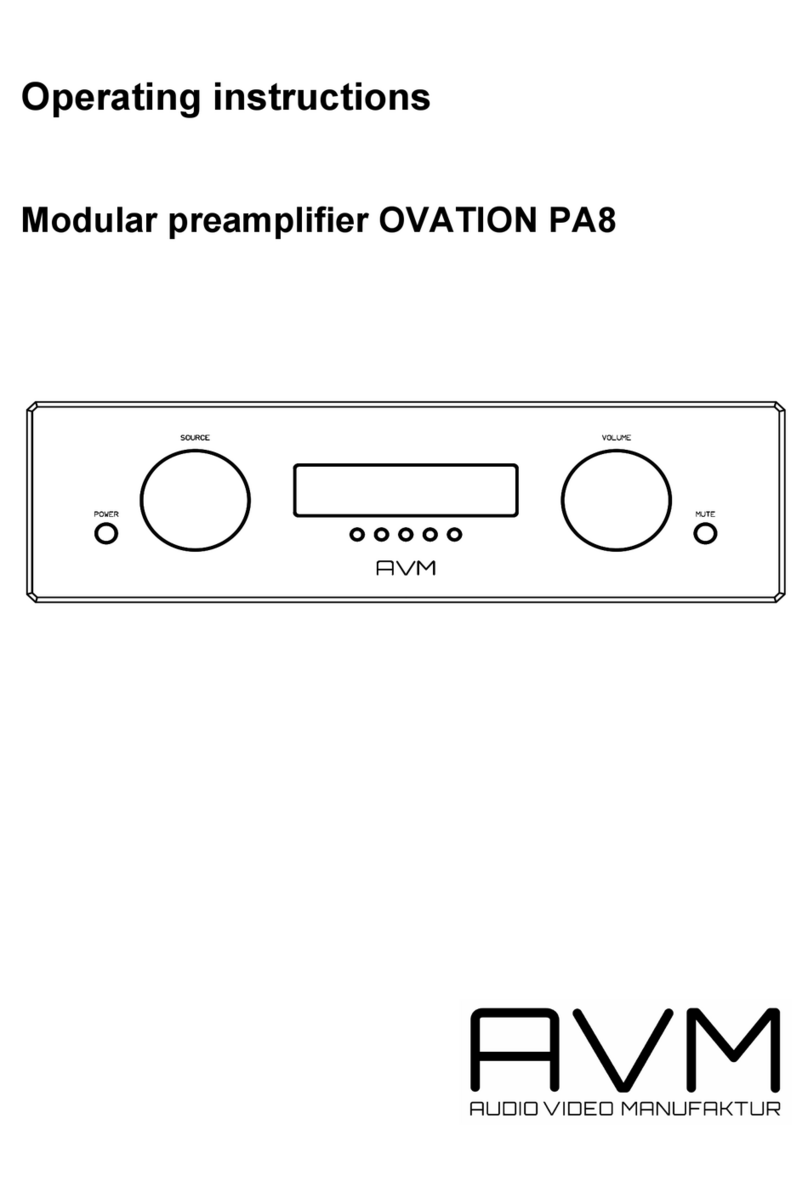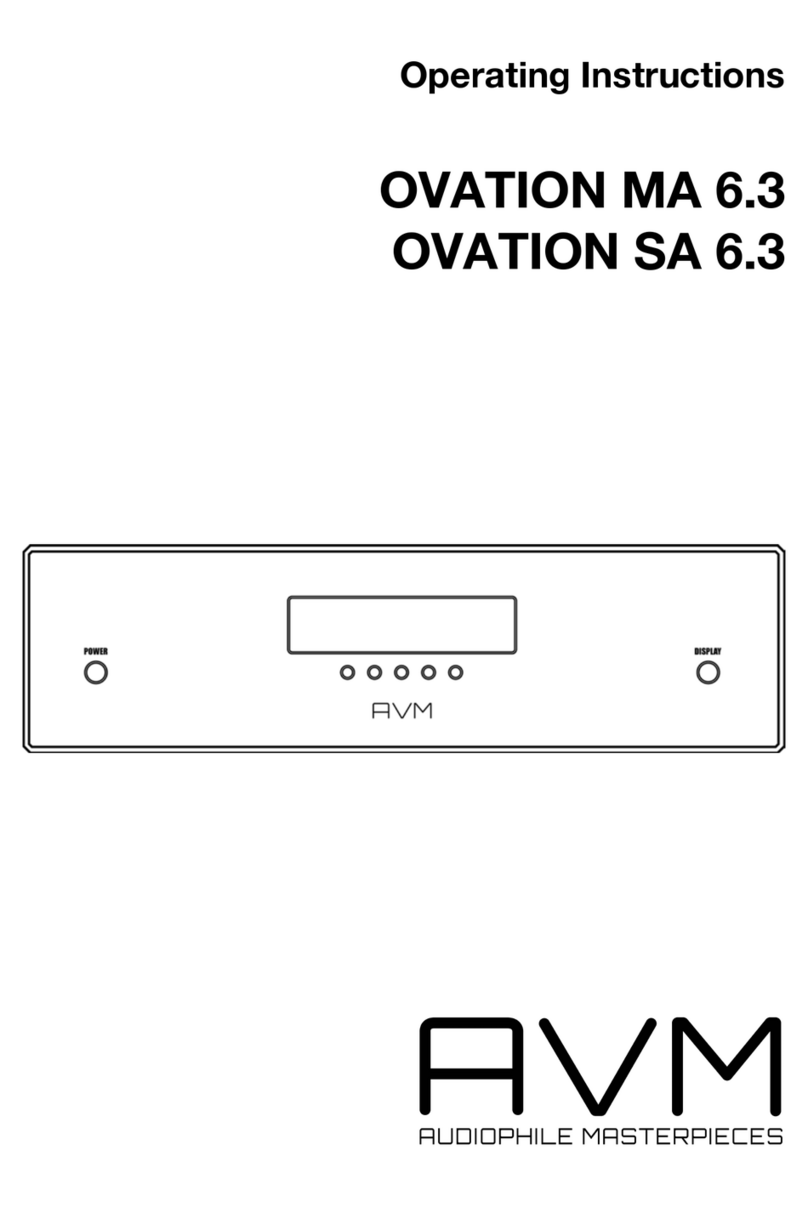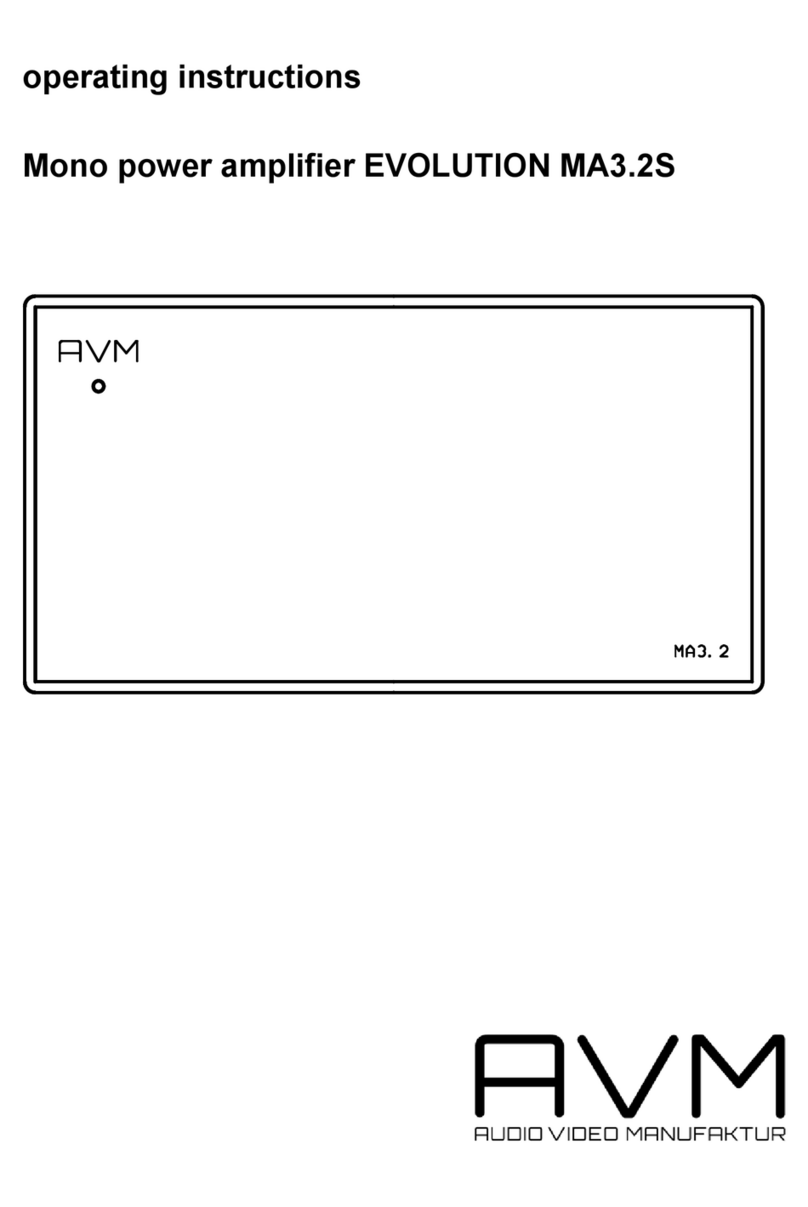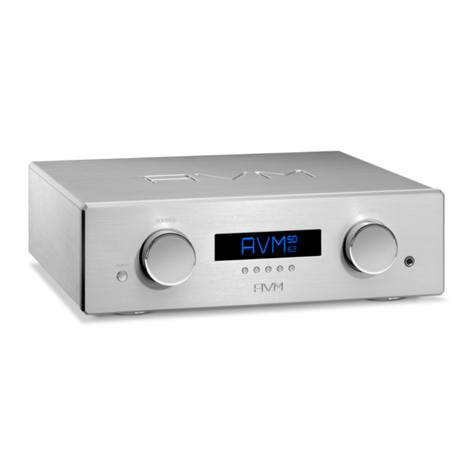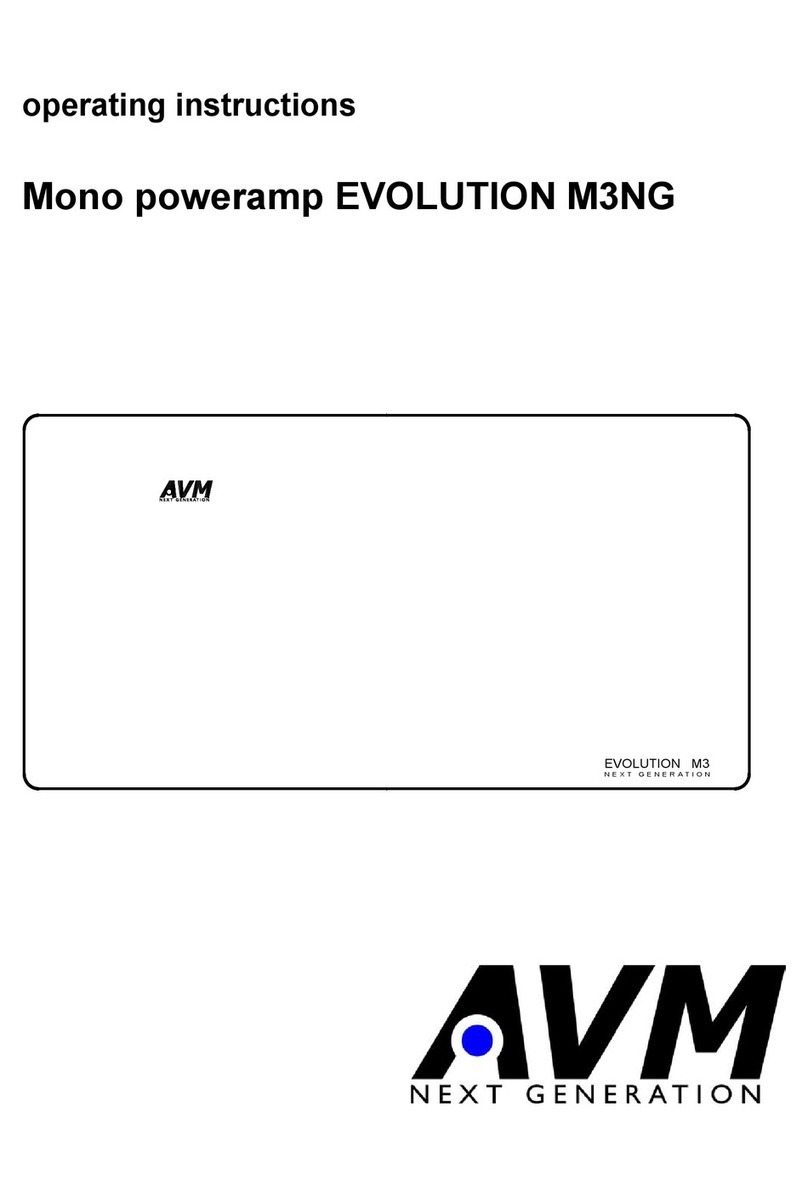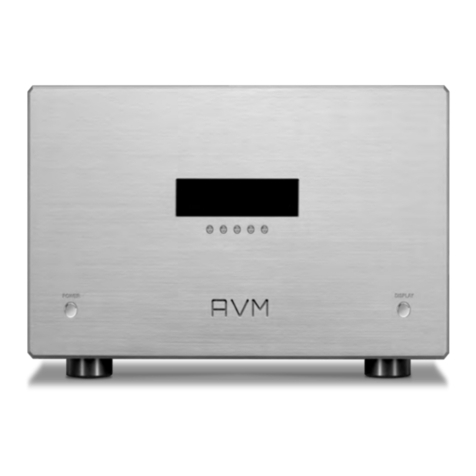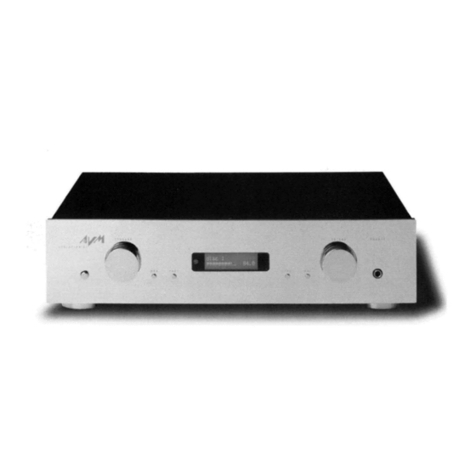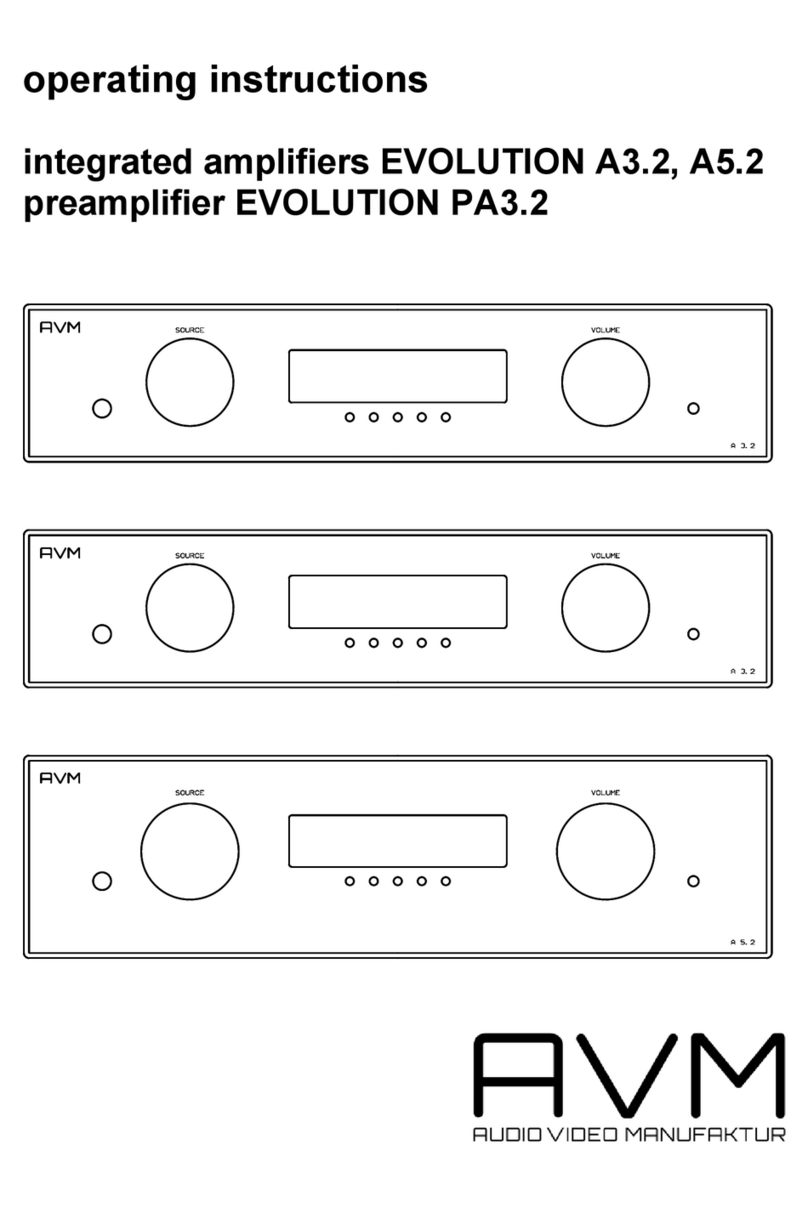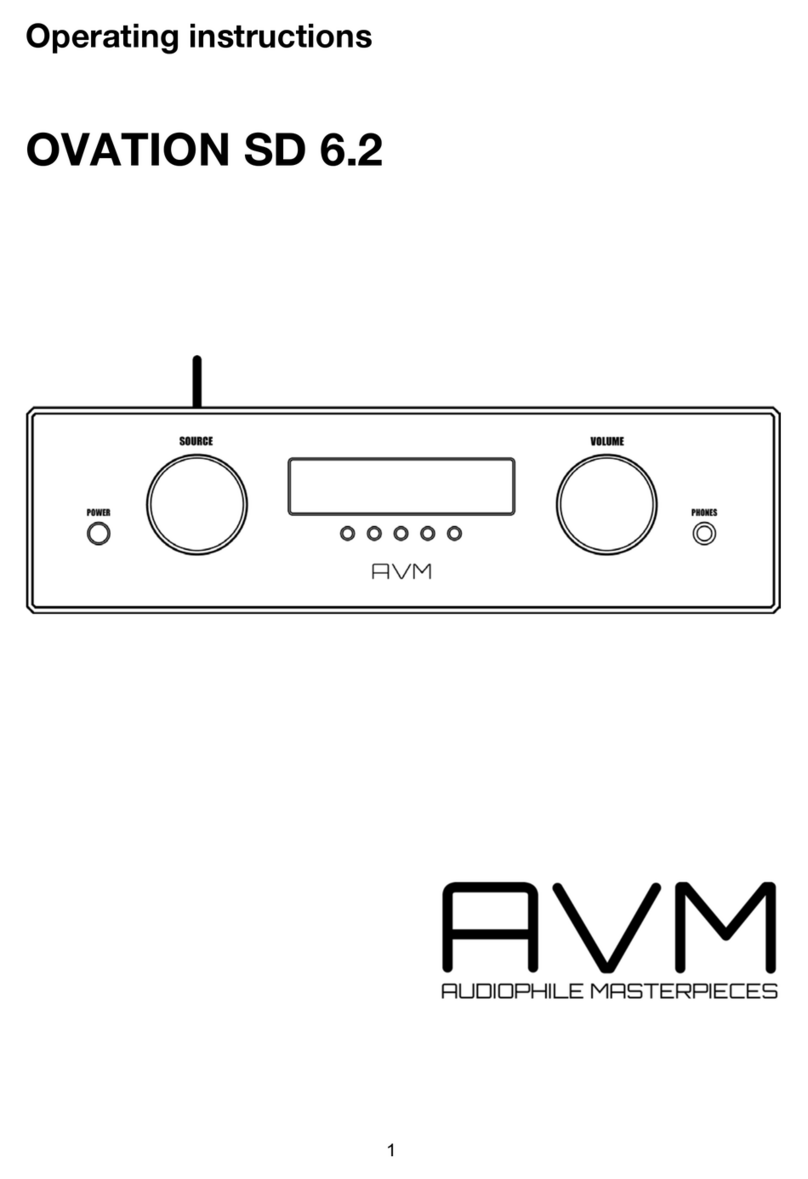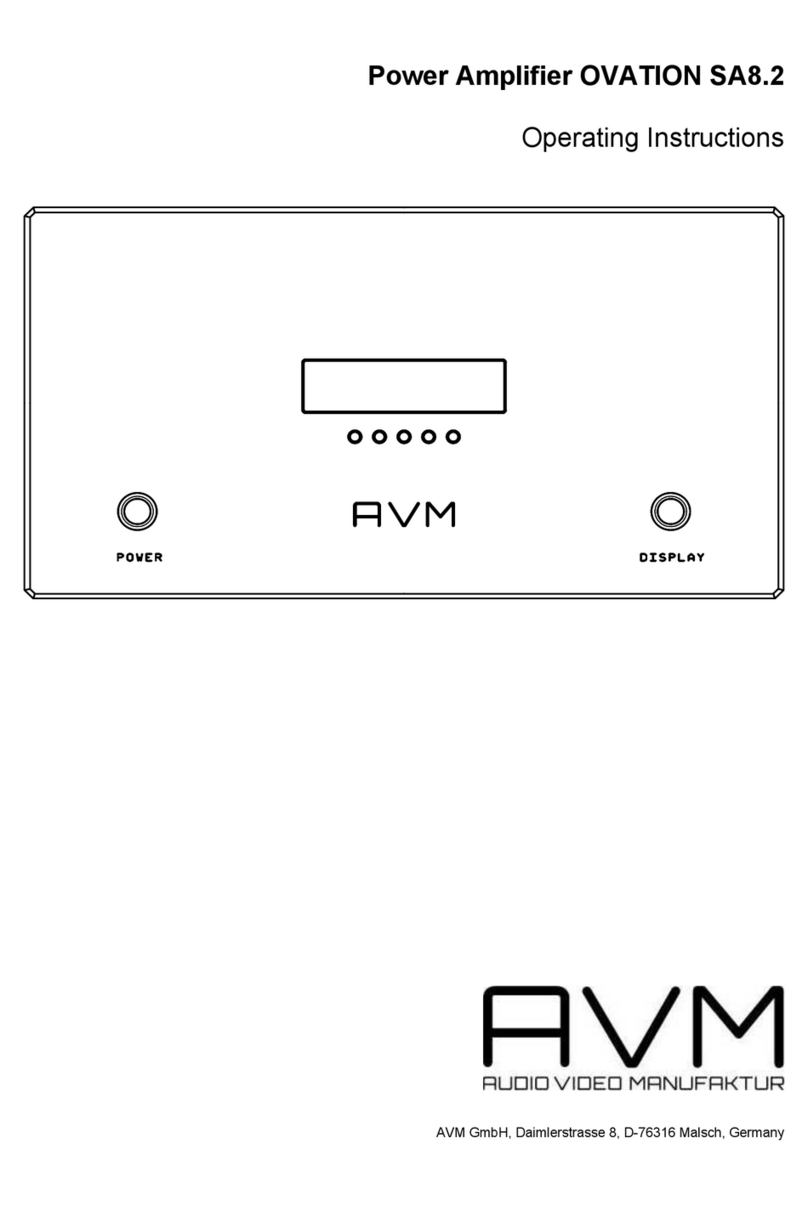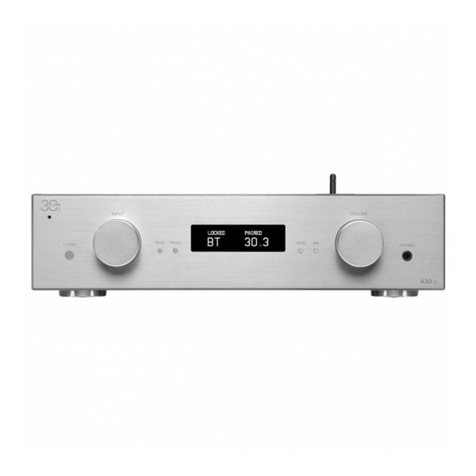
9
1.8 Connecting speakers
To connect the loudspeakers to the output sockets (5) of the MA 30.3, use only loudspeaker
cables of good quality and sufficient cross-section. If in doubt, ask your dealer to recommend
the optimal cable for your speaker. When connecting the loudspeakers, also ensure that the
polarity is correct. The output socket of the MA 30.3 marked in red must be connected to the
red speaker terminal or to the speaker terminal marked with a plus sign. The right and left
channels must have the same speaker polarity. The MA 30.3 power amplifiers are each
equipped with bi-wiring connections. The two red and white output terminals are internally
connected in parallel.
NOTES: If you use banana plugs, tighten the outer parts of the sockets (clockwise) before
plugging them in, so that they cannot make disturbing rattling noises during operation. If you
want to connect bare cable ends or cable lugs, turn the outer parts of the jacks
counterclockwise as far as they will go, insert the stripped cable ends or cable lugs from below
into the openings provided in the speaker terminals and then tighten the outer parts of the jacks
by turning them clockwise.
In order to take full advantage of the sonic benefits of the mono block concept, it is
recommended to place the power amplifiers as close as possible to the controlled speaker. In
this way, you obtain short distances for the transport of electrical power from the power
amplifier to the loudspeaker.
2 Operation
2.1 Switching device on / off
The mains switch (10) is located on the back of the MA 30.3 To switch on, set it to position "1".
In position "0", the MA 30.3 is disconnected from the mains.
ATTENTION: The unit is not completely disconnected from the mains in standby mode. To
prevent damage, we therefore strongly recommend that you disconnect your MA 30.3 from the
mains supply during a thunderstorm or when you are absent for long periods of time using the
mains switch (10) located on the rear panel or by pulling out the mains plug.
2.2 Selecting the operating mode
The control LED (1) on the front panel informs you about the operating status of the MA 30.3 In
standby mode, it only lights up weakly. As soon as the MA 30.3 is in operation, the operation
indicator LED lights up in a strong blue. With the operating mode selector switch (6) on the rear,
you can select from the following operating modes:
